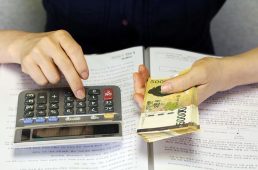At the end of February every year, we begin to receive envelopes or online messages with bank ID statements, one for each bank account we have. The bank ID statement is a tool that gives us a general and complete financial picture of our financial situation at the bank. It includes information about household expenses and income, financial assets, and liabilities. The information contained in the report is an important tool in supporting economic decision-making, and understanding the information in the report is the first step in changing and improving our conduct vis-à-vis the bank.
The goal of the regulation that led to the publication of this new document is to enable the customer to fully understand their banking situation, to improve their ability to track their account, and to enable them to strengthen their bargaining power over the banking terms, thereby encouraging competition between the banks.
What is a banking ID report?
A banking ID report is a report that the bank is obligated to produce annually, showing the customer all the financial activity from their bank account, as of the last day of the past year. The report includes information about the banking assets the customer has, liabilities, fees, and interest paid. The report comes in two forms: a short, concise report that presents the main points of the data, and a detailed report that delves into the data and information.
The report will be sent to households and small businesses each year on February 28, either through their online banking account or by mail. You can request an up-to-date report at any time of year and such a request may help improve the terms and fees of the bank, for example when switching to another bank or before taking out a loan.
The report comes in two versions: the abbreviated report that will be sent to you automatically by mail, email, or by message in your online account, and the detailed report that can be found in the reports section of your account on the bank’s website, or can be requested at the bank.
Link to the Bank of Israel’s explanatory video on the banking ID report.
What data does the banking ID report include?
The banking ID includes account and owner details, balances as of December 31 of the previous year, monthly income versus monthly expenses, the number of credit lines and their utilization, deposits and savings, including terms and exit points, housing loans (mortgage) and other loans, including the interest and balance of the loan payable, a portfolio of securities, the fees you paid to the bank in the past year by type, and more.
What is not visible in the banking ID?
- Banking data from accounts held at other banks.
- Data on a housing loan whose owner differs from the name of the account holders. A housing loan will only be presented in the report if the identity is the same between the account holders and the loan holders. For example, if the loan holders are Israel and Israela and the account holder is Israela only, the loan will not be presented in the report.
- Information on non-bank credit cards.
- The breakdown and summaries of expenses in the account do not include payment for fees and interest. This figure appears in Part C4 of the ‘Fees’ report and in the cells titled ‘Total Income/Expenses from and Interest and Indexation.’
- The overdue amount on a loan that was not paid on time does not include the legal expenses associated with its collection.
- Some of the data in the report are monthly averages and some are balances at the end of the year. Pay attention to the definition of the data you are reviewing.
What can be learned from the banking ID report?
Reading the report can help us get answers to many important questions, including:
- How much we lived in the red (overdraft) in the past year and how much it cost us.
- Are the terms of the interest we receive on bank credit – loans and overdrafts at the bank – good or can they be improved through negotiations or by switching to another bank?
- How much does managing a bank account cost us, fees do we pay, and will switching to a commission package save us money?
- Do we live within our income or are our expenses higher than our income?
- How many loans do we really have, what are their terms, and when do they end?
- Is our decision to save every month based on the right financial decision?
Wise consumerism also in our bank account? Understanding the comprehensive information accessible in the report is the first step in saving, which may amount to thousands of shekels. After understanding and analyzing the information in the report, you should contact the banker to improve the conditions. Here are 10 things you should do.



